In January 1992, two radio astronomers announced a discovery that would change our view of the Universe forever. Aleksander Wolszczan had been scanning the skies to study a type of spinning star known as a pulsar, but something was blocking his view. Curiosity piqued, Wolszczan eventually discovered the root of the interference: two planets in orbit around the star. Fellow radio astronomer Dale Frail verified the data, and the pair made their incredible announcement to the world: they had discovered the first ever known extra solar planets – or ‘exoplanets’.
The existence of exoplanets – planets orbiting stars other than our Sun – had long been theorised, but now there was definitive proof. For the first time, humanity could be sure that the Solar System in which it lived was not alone: there were planetary systems out there in the cosmos.
By splitting starlight that has passed through an exoplanet’s atmosphere, we can learn about its properties
Since this discovery, there has been a concerted effort by astronomers to find even more of these exoplanets. NASA’s Kepler Space Telescope, launched in 2009, has confirmed over 2,300 and revealed that, on average, there is one planet orbiting every star. The next time you look up at the night sky, think about this: for every star you can see, there is probably another world in orbit around it.
Read more 2019 science breakthroughs:
Now, a new generation of exoplanet-hunting missions is primed for follow-up investigations to build on Kepler’s progress and make discoveries that could change what we know about how planets form, and how life might arise elsewhere in the Universe.
Perhaps most exciting is the James Webb Space Telescope (JWST). This orbiting observatory, due to launch in 2021, is expected to make many new discoveries, including the search for exoplanets. JWST is seen by many as the successor to the Hubble Space Telescope, albeit 100 times as powerful and, rather than orbiting Earth, will instead orbit the Sun at a distance of 1.5 million kilometres from our planet. This will help it avoid heat from the Sun, Earth and the Moon and remain cool – around -225°C. Why? Because warm objects emit infrared light, and infrared will be JWST’s primary method of observing the Universe.

One of its goals will be to observe young planets forming around young stars. Stellar formation begins when clouds of gas and dust in space begin to clump mass together, growing so big that they eventually collapse under their own gravity. What remains is a young proto-star surrounded by a spinning disc of dust. Out of this dust may form a system of planets orbiting the central star, just like our own Solar System. In optical light these still-forming planets are obscured by the dust, but infrared can peer through it to get an unprecedented look at planetary formation in action.
“We build space telescopes because they can take sharper pictures, due to the fact that Earth’s atmosphere is not in the way distorting what we’re trying to see,” says Dr Jane Rigby, one of the mission’s project scientists. “If we want to study most colours of infrared light, then we need to go into space because that light cannot shine through our atmosphere.”
What’s really exciting is JWST’s ability to split starlight, a technique known as ‘spectroscopy’. By splitting the starlight that has passed through the atmosphere of an exoplanet, scientists can analyse the chemical signatures hidden within and learn much about the properties of that exoplanet – whether it has a lot of water vapour in it, for example, or other chemicals that might reveal something about the processes occurring on its surface.
“For gas giants like Jupiter and Saturn around other stars, we can look at bands of methane to see whether the atmosphere has clouds or whether it is clear,” says Rigby. “This is our first chance to understand in detail the atmospheres of exoplanets, and there’s a lot of interest in studying rocky planets like our own.”
If we are to understand how our Sun, the Earth and the other planets formed, we need to look for examples of planetary formation in action. Until relatively recently, we only had one frame of reference: our own Solar System. Now, we have a wide variety of different stars and orbiting exoplanets to choose from.
By splitting starlight that has passed through an exoplanet’s atmosphere, we can learn about its properties
“The results of Kepler revealed that there are so many surprises,” says Dr Kate Isaak, project scientist of the European Space Agency’s CHEOPS (CHaracterising ExOPlanet Satellite) mission, due to launch in early 2019. “In our Solar System we have smaller, rocky planets closer in, and large planets like Jupiter are further out. But other systems reveal hot Jupiters – huge gas giants that have orbits shorter than a few days around their host star. The geometry of the planet systems we are finding is very different from our own, and this is very exciting.”
Searching for ‘Super Earths’
The key aim of CHEOPS is to carry out follow-up observations of bright stars that are already known to host exoplanets, and it will primarily be looking at a class known as ‘super Earths’ and ‘super Neptunes’ – exoplanets more massive than their namesakes, yet smaller than gas giants like Jupiter and Saturn. These are another planetary anomaly that astronomers just didn’t know about before exoplanet study truly began.
CHEOPS will measure the regular dip in the brightness of a star as an exoplanet passes in front of it – known as a ‘transit’ – enabling scientists to decipher that planet’s size, among other properties. Ground-based telescopes will then measure the mass of the exoplanet by observing how its gravitational pull causes the host star to ‘wobble’, and combining this measurement with CHEOPS’s transit data will enable astronomers to calculate the planet’s ‘bulk density’.
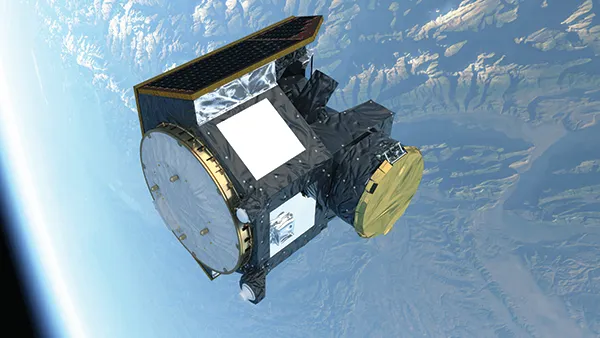
“Once we get the bulk density we can then start to work out the structure and composition of the planets,” says Isaak. “We don’t have super Earths in our Solar System, so the question is “what are they?” Are they rocky planets like Earth, or are they icy like Neptune? Are we talking about water worlds or small gaseous balls? CHEOPS will provide a contribution towards understanding what these planets are, what they’re made of, how they form and migrate, and ultimately the best conditions for life.”
Understanding the conditions for life is one of the key aims of exoplanetary study. If we can get a picture of the variety of planets out there in the Universe, we can discover how common rocky planets like Earth are, whether these distant worlds have atmospheres, and whether they orbit in the ‘habitable zone’ in other words close enough to their star that liquid water can pool on their surface – a key condition for the survival of life as we know it.
JWST and CHEOPS will provide unprecedented studies of exoplanets, but they have to know where to look. This is where NASA’s Transiting Exoplanet Survey Satellite (TESS) comes in. TESS was launched in April 2018 and has already begun its mission to monitor over 200,000 stars. It is expected to find over 1,500 potential exoplanet candidates, about 500 of which may be Earth-sized and super Earths. Its legacy should be a formidable catalogue of worlds ready to be explored by missions like JWST and CHEOPS.
Are we alone?
Since our planet is the only cosmic body we know of that harbours life, it makes sense to seek out other rocky, Earth-like worlds in the hope of discovering whether life exists elsewhere in the Universe. One space probe that will be doing just that over the coming years is PLATO, an ESA mission due to launch in 2026 that will look for small, rocky and icy bodies in the habitable zone around Sun-like stars. This, it is hoped, will enable astronomers to decipher just how common Earth-like planets are in the Universe, and where to point future missions like JWST in the hope of finding potentially habitable, rocky bodies.
“When I was a kid, we only knew about nine planets, all of them in our own Solar System,” says Rigby. “We’ve since dropped one (Pluto), but learned about a thousand more, and one of the largest surprises is how different many of those systems are. The big question is: how did we get here? How did Earth form? How did the Sun form? How did the conditions for life, with lots of iron and nitrogen – not to mention tonnes of water – on a rocky world, come to be?”
As Wolzsczan and Frail’s discovery shows, you never know when the next revolution in astronomy will be made, and curiosity is our best tool for seeking out these astronomical epiphanies. The new generation of exoplanet-hunters are just that: tools to peer out into the cosmos and study distant planets lightyears away, in the hope that we might solve some of the mysteries of our own.
Life finds a way
The extreme conditions on many exoplanets may make them appear uninhabitable, but hardy organisms –known as extremophiles –have shown that life can survive in even the most hostile places.
Cyanidium caldarium is a type of algae known to thrive in hot, acidic conditions. This suggests that life might be able to survive on a planet like Venus, known for its scorching, acidic atmosphere. Meanwhile, Chroococcidiopsis is a bacterium found in hot, arid and super salty conditions. Crucially, it can survive radiation, meaning life could potentially survive on planets unshielded from the radiation of their host stars. Microbes have even been found beneath glaciers in Antarctica –cut off from light and oxygen. Could similar organisms be trapped beneath the polar ice caps of Mars?
Perhaps most famous of all extremophiles is the tardigrade. These microscopic creatures have tolerated the extreme radiation and vacuum of space under controlled experiments by ESA. They can survive in temperatures from -272 to +150°C, and can live without water for years. What’s more, if conditions become too extreme even for them, tardigrades can suspend all but their own vital functions and continue surviving in a form of suspended animation.
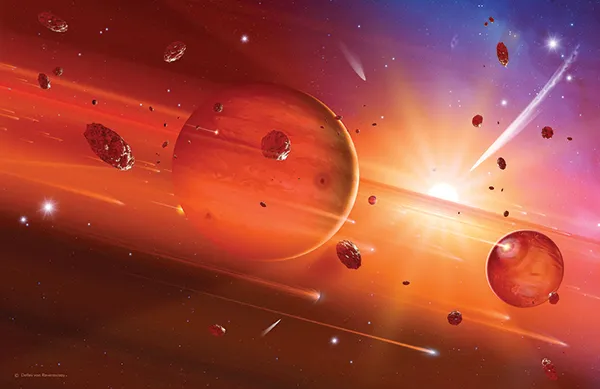
Extremophiles show just how robust life can be, and hint at the fact that they may be found even in the most unforgiving corners of the cosmos.
Stranger than fiction
55 Cancri e orbits its star 25 times closer than Mercury orbits our Sun, creating a blistering world that reaches temperatures as high as 2,400°C.

Kepler-16b is a planet with two suns, just like Luke Skywalker’s planetary abode Tatooine in Star Wars.
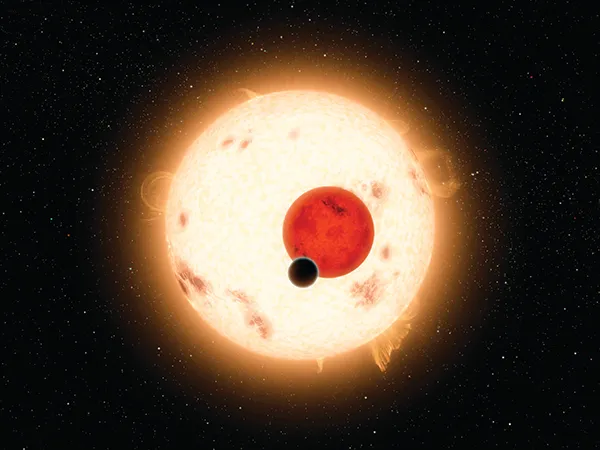
KELT-9b is a gas giant about twice the size of Jupiter with a dayside temperature over 4,300°C, making it hotter than
many stars.
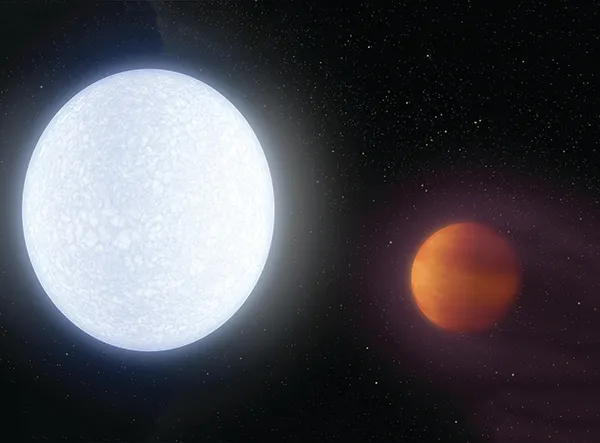
WASP-12b’s scorching heat allows it to reflect almost no light, making it appear pitch black.
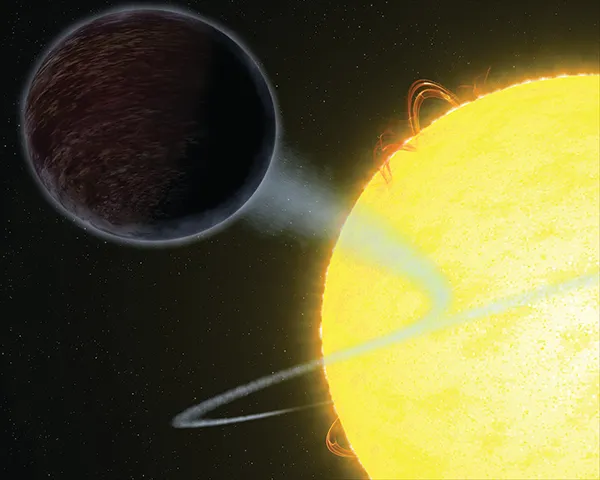
OGLE-2005-BLG-390Lb is about five times the mass of Earth and is a rocky planet with a surface temperature of about -220°C, meaning it is probably covered with frozen oceans.
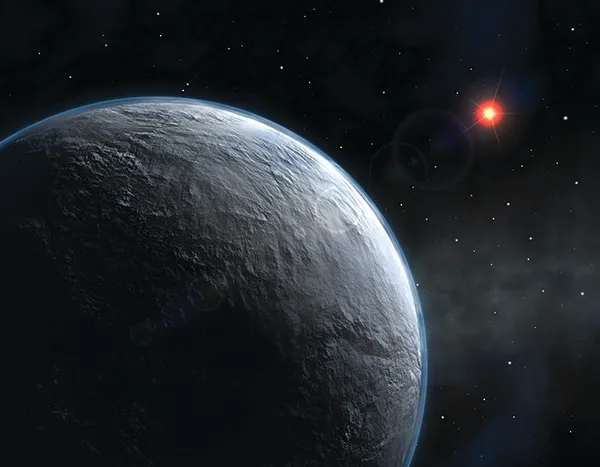
Gliese 436b has a temperature over 300°C. But powerful gravitational forces are thought to have produced ‘burning ice’, compressed so it remains solid despite the extreme heat.
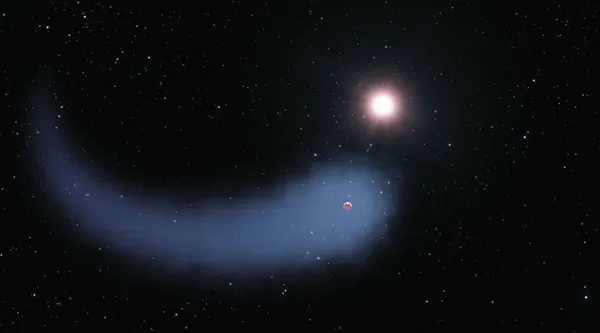
Listen to an episode of In Our Time on exoplanets bbc.in/2RoyBqC

Follow Science Focus onTwitter,Facebook, Instagramand Flipboard
